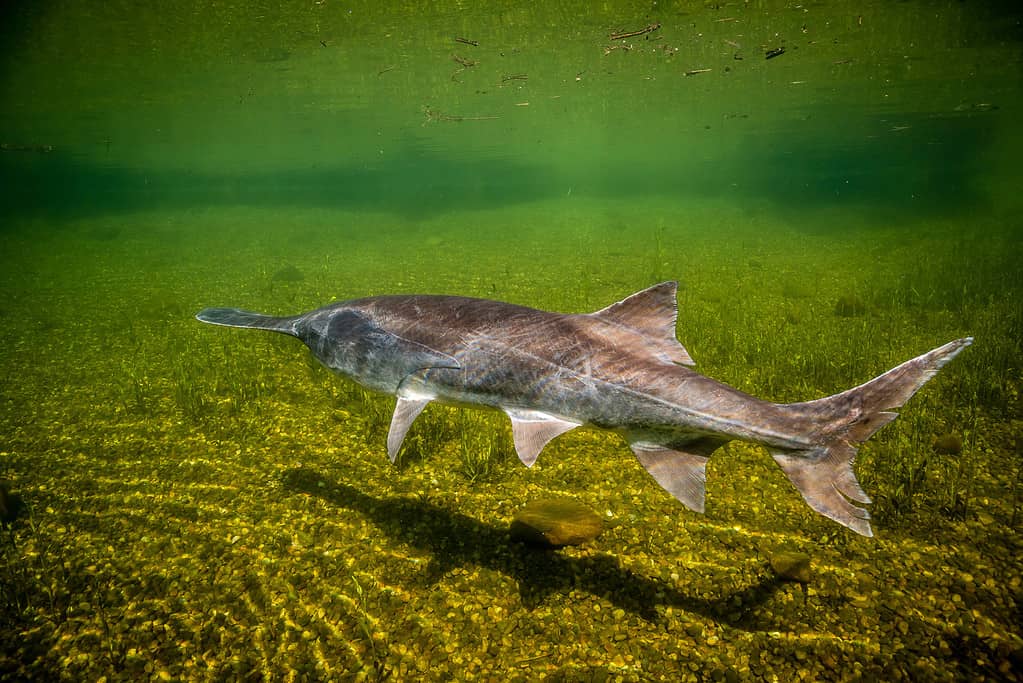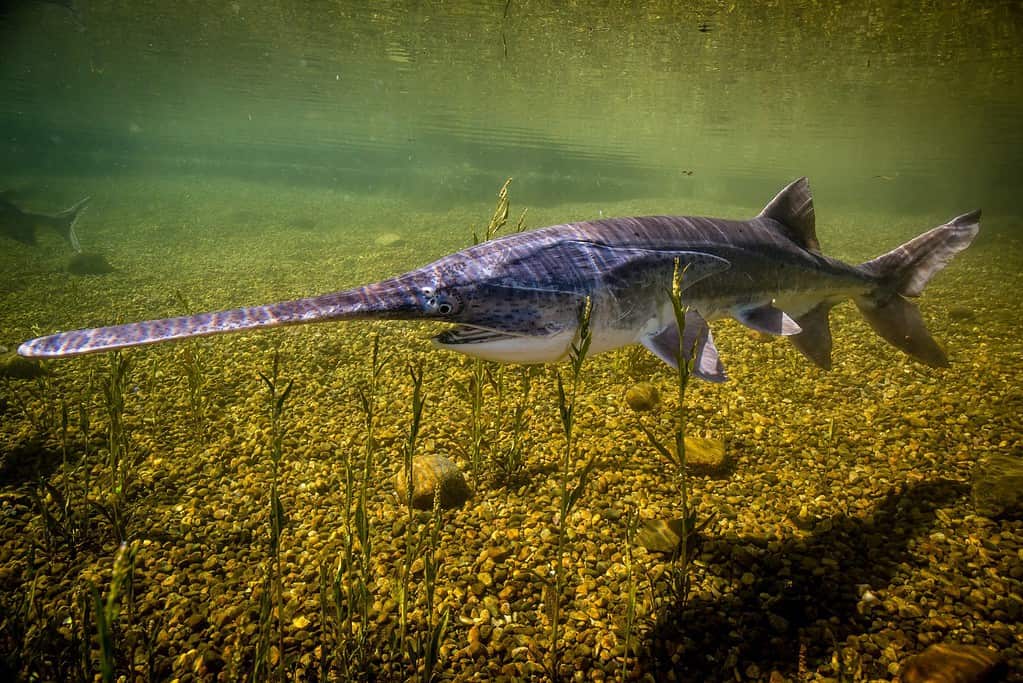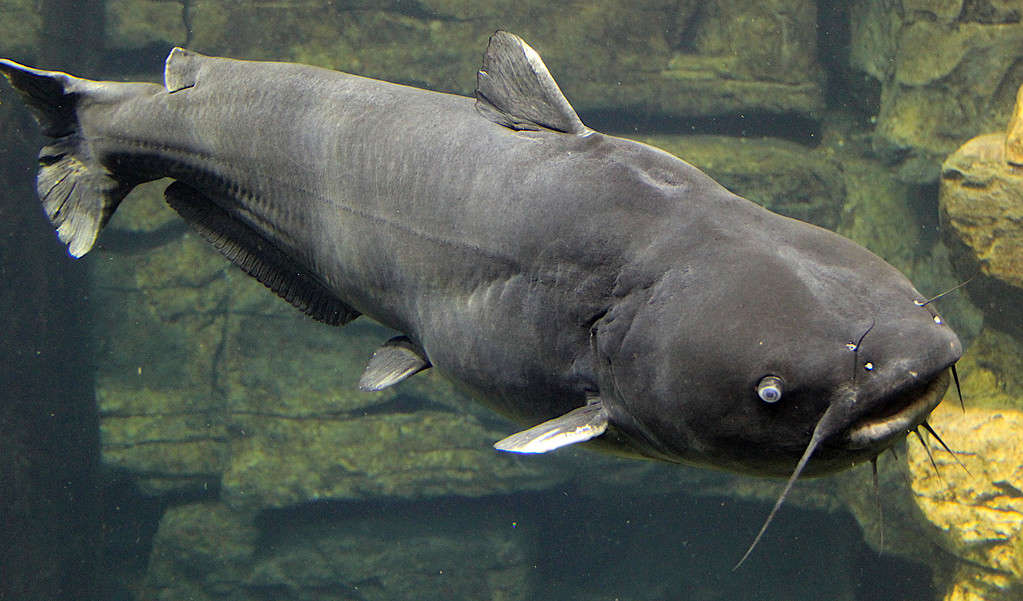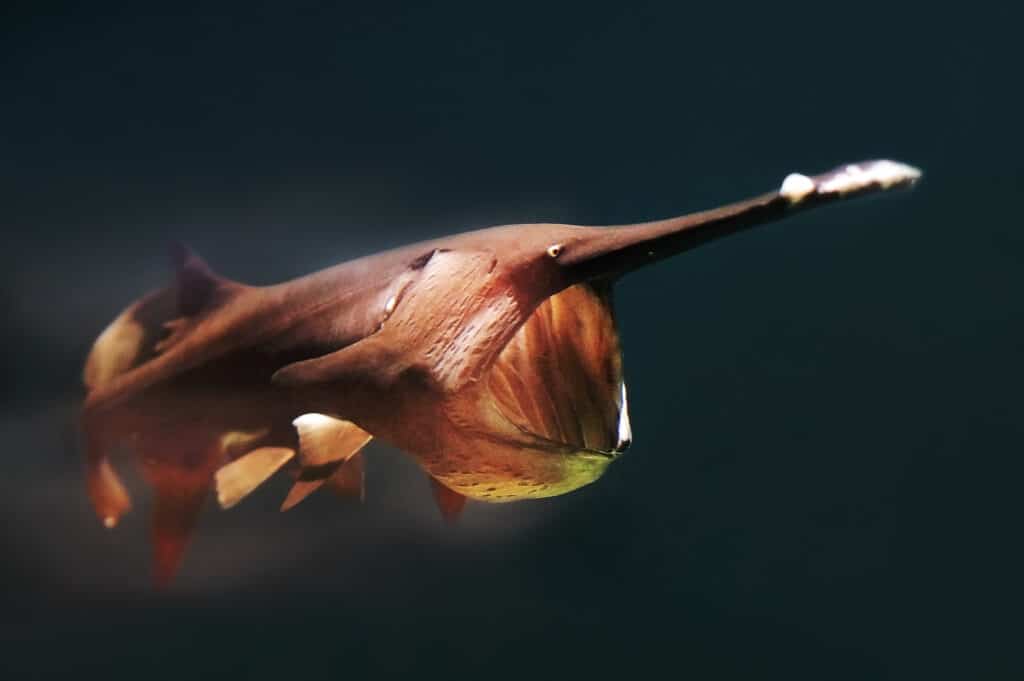A Tennessee state fishing record has been broken in a big way. On April 13, Henry Dyer of Kingston, Tennessee, landed a behemoth 149-pound paddlefish on Cherokee Lake northeast of Knoxville. That is about the same weight as a young adult white-tail deer! The fish was 79⅝ inches long with a 44⅜ inch girth.

A new paddlefish record has been set in Tennessee.
©USFWS / Public domain – License
For the third consecutive year, Cherokee Lake has produced a state-record paddlefish. In 2021, Leonard Jech reeled in a 109-pound paddlefish, setting a record. However, his triumph was temporary, as Chad Collins broke that record in 2022 by catching a 120-pound paddlefish from the same waters. Now, just a year later, another state-record paddlefish has emerged from Cherokee Lake, continuing this remarkable streak.
The Tennessee Wildlife Resources Agency confirmed the new record on their social media accounts.
Paddlefish Snagging
Dyer used the snagging technique to catch the paddlefish, which involved using a large treble hook pulled through the water to snag the fish. Most of the time, snagging doesn’t fall under the Class A sportfishing methods but under the Class B methods. This class also includes tactics like trotlines, archery, and spearguns, which deviate from the standard rod and reel approach. However, because paddlefish don’t bite lures or bait, snagging remains one of the few methods to catch them. Consequently, Tennessee includes paddlefish snagging in its Class A sportfishing records.
According to state law, Tennessee anglers can snag one paddlefish per day during established seasons. Those seasons vary among different bodies of water, so anglers must check local regulations. Tennessee is one of thirteen states that allow paddlefish snagging.

Paddlefish are large freshwater fish that can only be caught by snagging.
©U.S. Fish and Wildlife Service / Public domain – License
“Can’t Wipe the Smile Off My Face”
Dyer spoke with Chattanooga news station WTVC about his catch. He noted that, at first, he thought he snagged a stump until “all of a sudden, it just took off.”
“I was in the back of a boat, and it was everything I could do to hold on to it,” Dyer recalled. “The fish made five long runs. It took about 35 minutes for me to get it to the boat.”
This paddlefish actually weighed more than the fisherman who caught it. Dyer admitted, “I’m a little feller, and that fish weighed more than me.”
Interestingly, Dyer didn’t head for Cherokee Lake with the intention of snagging paddlefish. He planned to fish for striped bass. But when he noticed others were snagging paddlefish, he decided to give it a try. He is certainly glad he did. “You can’t wipe the smile off my face right now,” Dyer said.
Where Is Cherokee Lake Located on a Map?
Cherokee Lake is an artificial reservoir formed by the impoundment of the Holston River behind Cherokee Dam. The lake contains 30,300 surface acres and 393 miles of shoreline. Fish densities are high for a variety of shad and bass, as well as crappie, walleye, alewife, saugeye, bluegill, catfish, and of course, paddlefish.
Largest Fish Ever Caught in Tennessee
Dyer’s catch didn’t just set a new Tennessee paddlefish record, though. It is the largest fish of any species ever caught in the state since fishing records have been documented. The previous record-holder for the largest fish ever caught in the Volunteer State was a 130-pound blue catfish caught in Fort Loudoun Reservoir in 1976.

The blue catfish grows to prodigious sizes, so it’s not surprising it held the record for the largest fish species ever caught in Tennessee. Not anymore!
©Thomsonmg2000, cropped and adjusted by Kostka Martin / CC0 – License
World Record Paddlefish
While this paddlefish shattered the Tennessee record, it didn’t reach world-record proportions. The largest paddlefish on record was a gargantuan 198-pound fish that anglers caught in Iowa in 1916. It measured just over 85 inches long with a 45 ½ inch girth.
Paddlefish
Another name for the paddlefish (Polyodon spathula) is “spoonbill.” It is sometimes referred to as the “spoonbill cat” or “shovelnose cat,” even though it is not a catfish. The sturgeon is the closest living relative of the paddlefish. Like sturgeon, paddlefish roe is used in highly-prized caviar.

Paddlefish caviar is a highly-prized delicacy.
©iStock.com/nndanko
Paddlefish are ancient fish dating back to the Cretaceous Period. These primitive fish have remained almost unchanged for 120 to 125 million years.
The paddlefish’s skeleton is largely cartilaginous. The only bone in the fish’s body is the jawbone.
This archaic fish has exceptionally poor eyesight, but its rostrum (the fish’s paddle-like snout) contains electroreceptors that can detect tiny electrical fields signaling the presence of prey. They can perceive electrical fields of less than 1/1,000,000,000 of a volt per centimeter.
Paddlefish don’t bite traditional lures or bait because they’re filter feeders, feasting on zooplankton. They possess long, comb-like gill rakers attached to their gills. These rakers act as a strainer. When a paddlefish opens its expansive mouth, water pours in and gets filtered by these gill rakers. While the water exits through the gill covers, the gill rakers capture and retain the plankton, which the paddlefish then consumes.
A typical adult paddlefish measures around 60 inches long and weighs 60 pounds. Since this large freshwater fish feeds on the tiniest organisms, paddlefish spend most of their time feeding.

The bizarre-looking paddlefish use their large gills and mouths to capture zooplankton.
©Marina Veder/Shutterstock.com
The photo featured at the top of this post is © Suivez_mon_regard/Shutterstock.com
Thank you for reading! Have some feedback for us? Contact the AZ Animals editorial team.







